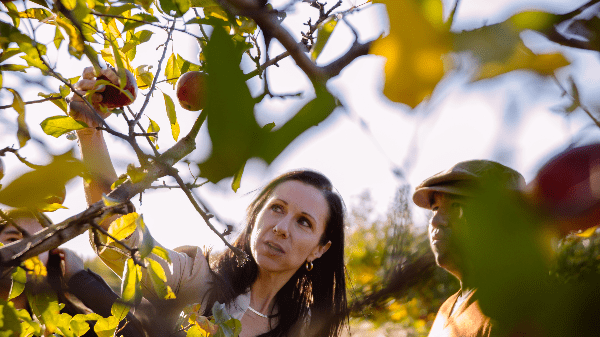A couple of days ago, my wife and sons went for their annual Halloween trip to Sonny Acres Farm, “a family owned and operated pumpkin patch” in West Chicago, IL.
They came back, as far as I could tell, with a couple of pumpkins and a 4 x 4-inch square of honeycomb. In the interests of domestic peace, I didn’t ask them to break down the $80 debit card charge.
I drove by Sonny Acres, a farm tourist attraction, a couple of times over the last week. The parking lot was jammed.

“Wow,” I thought. “This could be a lucrative business.”
So it can, but not always. I learn from The New York Times that upstate New York apple orchards who rely on a pick-your-own model have been suffering this season.
Why? Because of eight consecutive weekends of wet weather. Almost 11 inches of rain fell in the area during September and October.
One example is Barton Orchards BB #:345597 in Poughquag, NY, a 175-acre u-pick apple operation that features a large playground, a petting zoo, and a taproom featuring hard cider and local microbrews. Owner Pete Barton says this is the worst farm tourism season since he converted the family farm to a pick-your-own format in the 1990s. He estimates that he has lost 30 percent of his business to this year’s bad weather.
Other u-pick orchards have reported similar losses—from a quarter to as much as half.
The background: falling wholesale prices in the 1990s forced many apple growers in New York state (the second largest apple producing state in the nation most years, after Washington state) to rethink their business models. Some closed; some revamped into u-pick operations.
Bob Stuart, a grower in Granite Springs, NY, who converted his 35-acre apple orchard into a u-pick operation in 1999, was having trouble offering hay rides this year (the tractor wheels were getting stuck in the mud) and didn’t even attempt a corn maze (which would have just been a mushy mess).
“People aren’t coming out,” said Stuart. “You’ve got seven weekends to make it in, and if you lost half of your days, you’re out of luck.”
It is vertical integration of a kind, and going far beyond u-pick, it can turn a farm into a major tourist destination. We may assume that Knott’s Berry Farm, a major tourist mecca in Southern California, does not make most of its income from selling berries.
Some farm tourism destinations have gone from zero to the top back to zero, then back again. The Nut Tree, in Vacaville, CA, was originally a fruit stand that evolved into a culinary destination (it was at one point the third largest pineapple importer on the West Coast and even catered a dinner for Her Majesty the Queen in Sacramento in 1983). But the restaurant failed to adapt to changing food trends and closed in 1996.
Today it’s a mixed-use development (Buffalo Wild Wings, Jamba Juice, Old Navy, Best Buy) and offers rides on “the legendary No. 5 train.”
Without wishing to sneer at success, I find myself asking, when is a farm no longer a farm? Maybe when the rain no longer stops people from coming.



